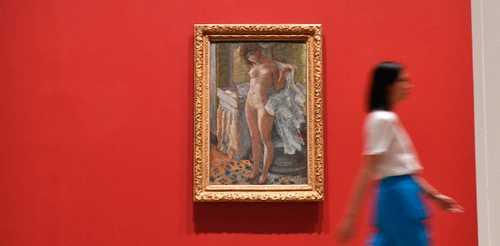Pierre Bonnard at the Tate: the surprising reasons we love art
Curated from: theconversation.com
Ideas, facts & insights covering these topics:
5 ideas
·821 reads
8
Explore the World's Best Ideas
Join today and uncover 100+ curated journeys from 50+ topics. Unlock access to our mobile app with extensive features.
Why we like art
Art is most exciting when it creates states of psychological conflict, confusion, or dissonance.
While in other circumstances, such an onslaught might make us run a mile, with art, we are held transfixed.
92
271 reads
Visual indeterminacy
It occurs when we are presented with something that we don't immediately recognize. It creates a degree of cognitive dissonance that may be frustrating or even unpleasant.
For example, seeing a vague shape in the corner of a room that might be a cat or a bag. A second look is needed to satisfy our curiosity.
55
110 reads
Color conflicts
Complementary colors lie opposite one another on the spectrum. For example, red complements blue, yellow complements violet.
When complementary colors are placed in close proximity, it is apt to cause conflict and disturb the eyes. Used subtly, it can make our eyes dance to a discordant tune.
55
187 reads
Equiluminance
When we convert a painting to monochrome, the level of light coming from each area is equal.
This confuses the parts of the brain that process color and luminance, and throw our senses of color and light into conflict.
48
92 reads
A logical impossibility
In representational art, figurative paintings contain a logical impossibility - we see one thing (the painting), which is, at the same time, another thing (what it depicts).
The tension or contradictions between the material and representational layers in artwork contribute to the excitement and puzzlement we can experience with art.
50
161 reads
IDEAS CURATED BY
Traveling can make you smarter, more creative and improve your problem-solving abilities.
Isabella Santos's ideas are part of this journey:
Learn more about personaldevelopment with this collection
The power of gratitude and positive thinking
Ways to improve your mood
Simple daily habits for a happier life
Related collections
Similar ideas
1 idea
Pablo Picasso - Wikipedia
en.wikipedia.org
6 ideas
Is It Even Possible to Define What Art Is, Exactly?
thoughtco.com
3 ideas
Read & Learn
20x Faster
without
deepstash
with
deepstash
with
deepstash
Personalized microlearning
—
100+ Learning Journeys
—
Access to 200,000+ ideas
—
Access to the mobile app
—
Unlimited idea saving
—
—
Unlimited history
—
—
Unlimited listening to ideas
—
—
Downloading & offline access
—
—
Supercharge your mind with one idea per day
Enter your email and spend 1 minute every day to learn something new.
I agree to receive email updates
